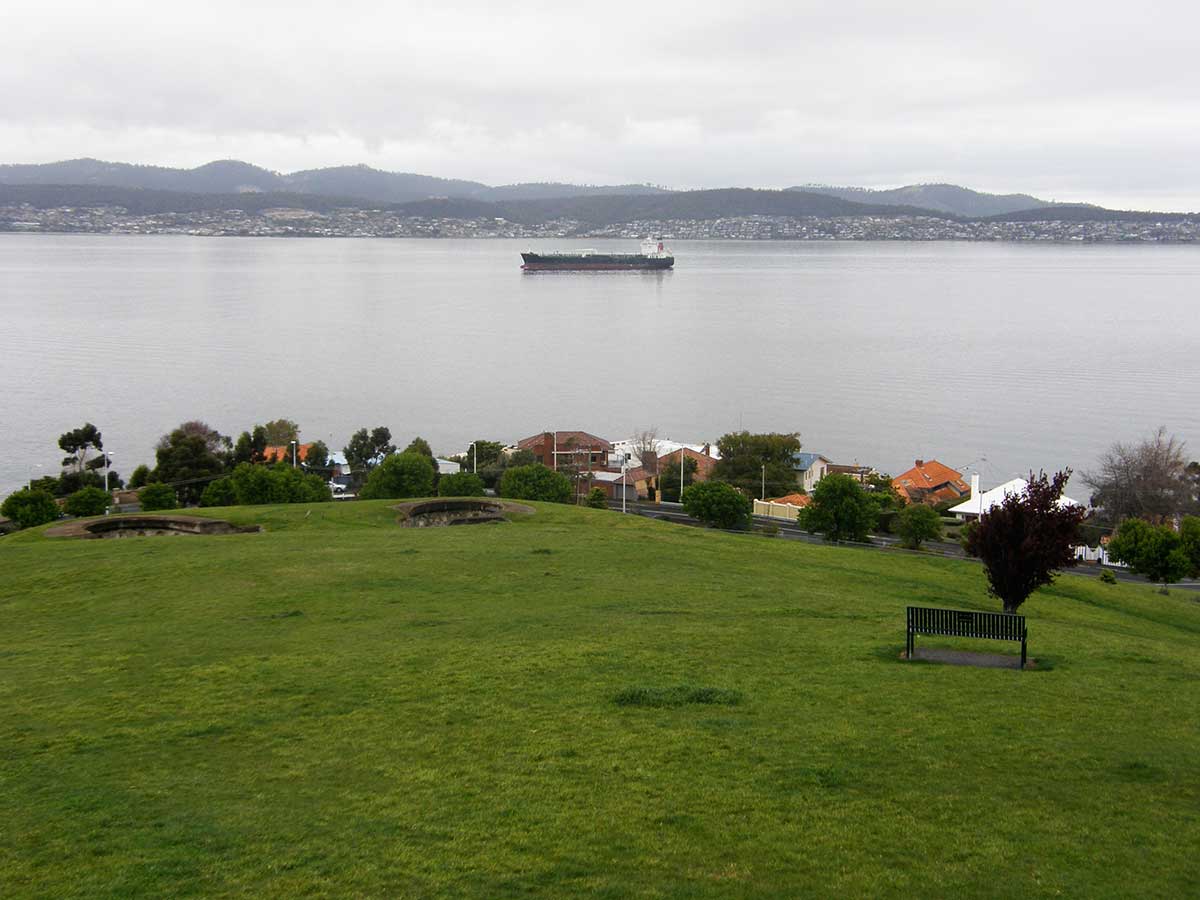Alexandra Battery, Hobart

The Alexandra Battery was part of Hobart colonial coastal defence network of now defunct coastal batteries, some of which are inter-linked with tunnels, that were designed and built by British colonial authorities in the nineteenth century to protect the city of Hobart, Tasmania, from attack by enemy warships.
During the nineteenth century, the port of Hobart Town was a vital re-supply stop for international shipping and trade, and therefore a major freight hub for the British Empire. As such, it was considered vital that the colony be protected. In all, between 1804 and 1942 there were 12 permanent defensive positions constructed in the Hobart region.
When Governor Lachlan Macquarie toured the Hobart Town settlement in 1811, he was alarmed at the poor state of the defences and the general disorganisation of the colony. Along with planning for a new grid pattern of streets to be laid out, and new administrative and other buildings to be built, he commissioned the building of Anglesea Barracks, which opened in 1814, and is now the oldest continually occupied barracks in Australia. Macquarie also suggested the construction of more permanent fortifications.

Following the condemnation of the Mulgrave, Prince of Wales, and Prince Albert batteries in 1878, it was decided to re-institut the plans for the alteration of the defensive strategy around the entrance to Sullivans Cove that were first drawn up in 1868.
A triangle of fortresses with the Queens Battery at the Apex, and two new Batteries, the Alexandra Battery, named for Princess Alexandra, the Princess of Wales, and the Kangaroo Battery on the eastern shore would be adequate for the task. Construction began on the new fortifications in 1880, and at the same time, a new permanent field artillery unit, the Southern Tasmanian Volunteer Artillery equipped with two breech-loading 12 pound howitzers and two 32 pounder guns on field carriages, was raised.
Following the dismantling of the Battery Point batteries, much of the stonework was relocated to the site of the Alexandra Battery. The site of the Alexandra Battery is now a public park with commanding views of the river, and much of the original construction is still accessible.

